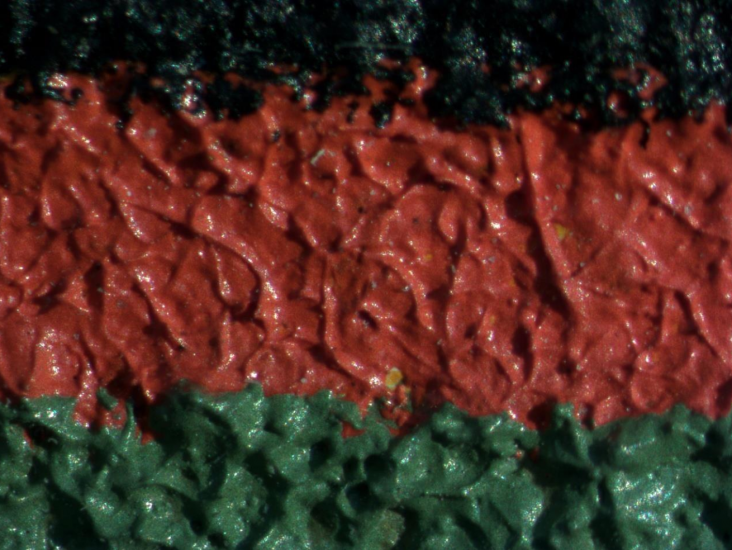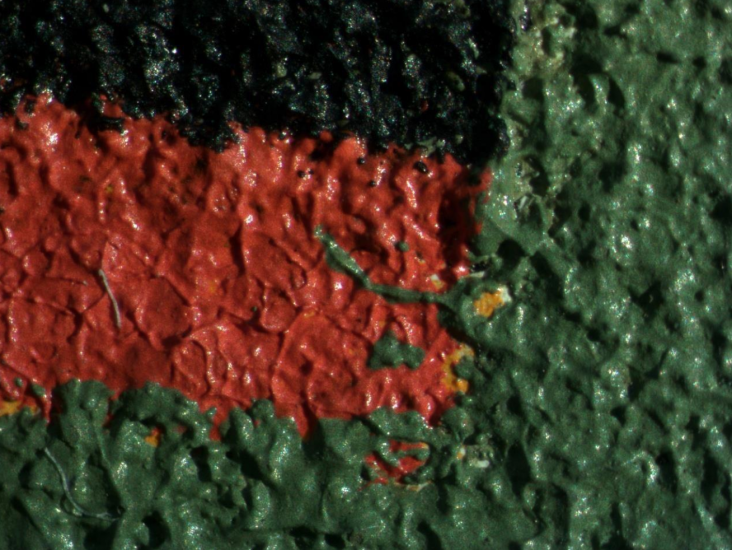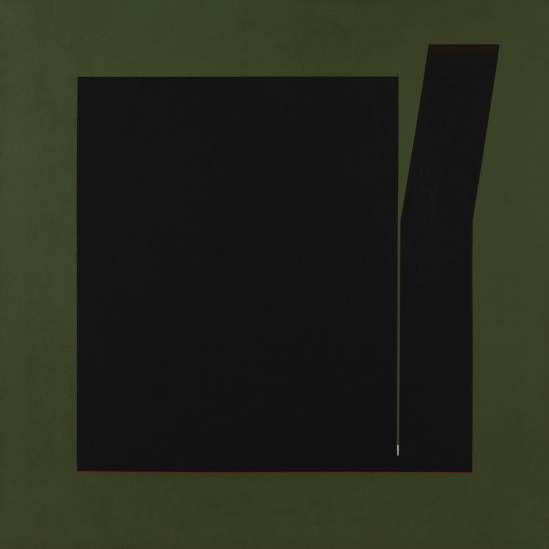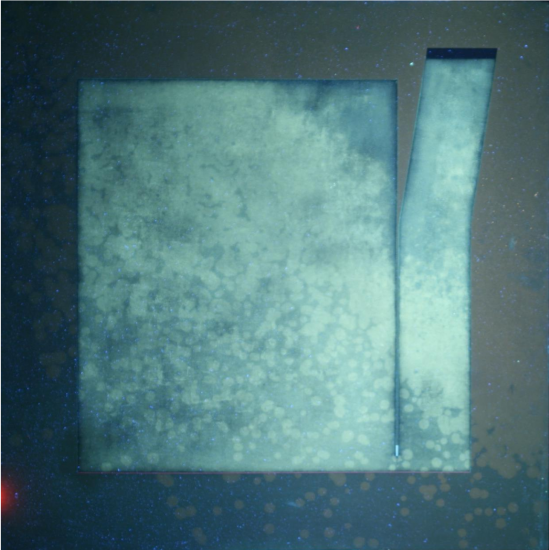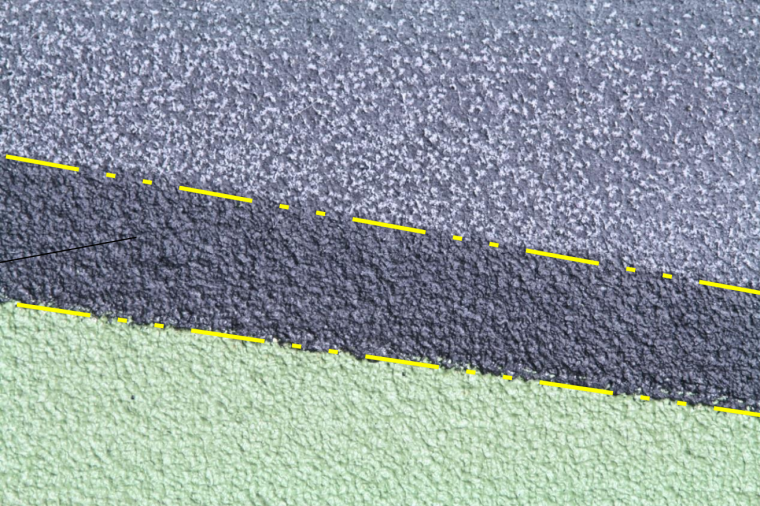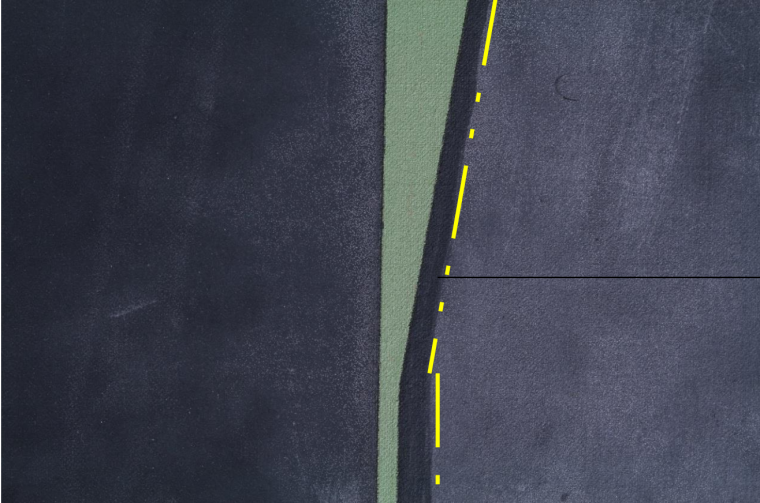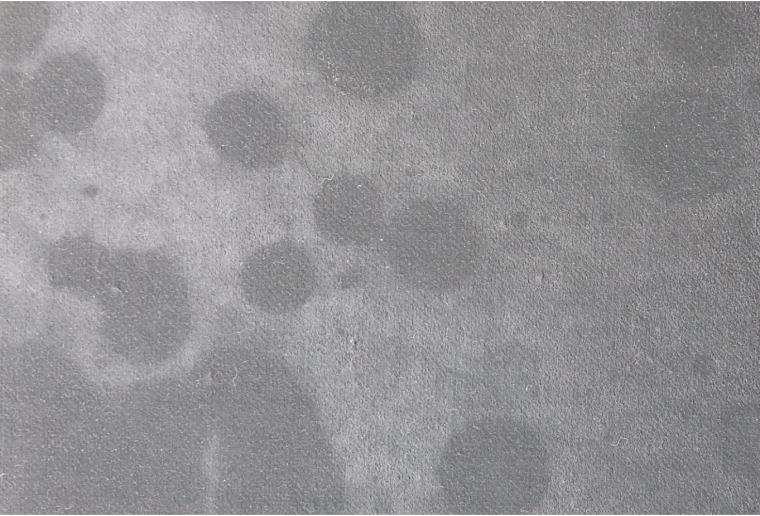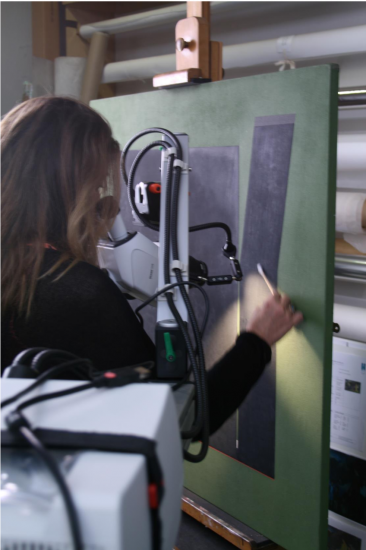Here we focus on one of the works by Cecil King that underwent conservation treatment recently, Intrusion 2. The painting is a fine of example of his later works, in which King’s controlled use of colour and line creates dynamism.
Intrusion 2 is characterised by areas of colour fields separated by thin lines and the use of hard-edged areas. The colours are pure and flat. The oil medium is brush-applied then dabbed with foam after using the brush and knife. The application method is especially visible at the edges of the paint film on the verso (the back of the painting). Green paint was applied first and black paint extends marginally over the green in places, with compositional elements delineated with masking tape to prevent overlapping of different colours. The artist built up areas of colour in several layers; the upper, dull olive green layer is applied over a brighter green which is visible at colour borders, and the black consists of at least two layers, the first relatively dilute and the second thicker, applied to fill the weave texture of the canvas more extensively.
Intrusion 2 has now been returned to a displayable condition. It will be back on public view at the Hugh Lane in Gallery 17, with other Cecil King paintings later in 2020.
Cecil King, 1921 – 1986
Intrusion 2, 1985
Oil on canvas
cm 101.7(h) x 101.7(w)
-
Original appearance
Prior to treatment, the original appearance of the work had been drastically altered by the efflorescence over the paint layer (efflorescence is crystalline deposit, white in colour that is formed on the surface) and loss of transparency. As well drip-marks were present on surface, visible as pale/white tide-marks on areas of black.
Regarding the degradation of the black colour, Oliver Dowling says, ‘I think the problem was caused by a black paint manufactured by a French company that unfortunately turned out to cause a problem as time went on.’
-
Restoration process
Before restoration work could begin, the painting underwent a full-scale photographic examination of the ground layer and paint layers. Ultraviolet photos reveal the uneven pale/white layer caused by migration to the surface of the additives present inside the medium and a layer of dust/unknown particulates. These images, in tandem with microscopic examination, clearly showed the artist’s fine painting technique and the extent to which the painting had been damaged.
A project was developed to research methods to safely remove efflorescence over the black area. Paintings may require very individual conservation approaches even if they have the same origin. Many factors may be at play, such as the use of different techniques, climatic conditions and the exposure to different light levels.
Cleaning can produce a disturbing effect when the nature of paint films is not taken into account. Unnecessary solvents can seriously damage the paint surface and destroy the original “skin” of the painting. The aim of the project was dictated by the intent to clean the paint-film and leave the painting in its authentic, aesthetic integrity state.
The cleaning required a chemical solvent to be found which could remove the uneven areas of damage over the black layer while limiting damage to the underlying original paint. A variety of tests were then used to assess and develop the appropriate solvents and application methods. Reversible conservation-grade materials were used to restore the painting’s surface.
All the conservation project work has been undertaken in close consultation with the Director of the Gallery, Barbara Dawson, the Head of Collections, Logan Sisley and Oliver Dowling, an expert with extensive experience of King’s artworks.





